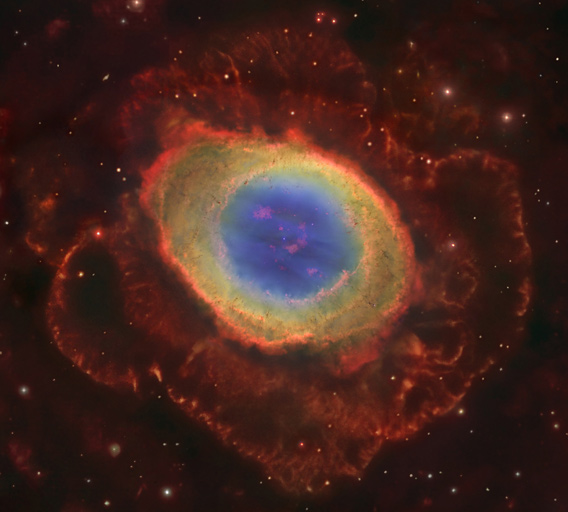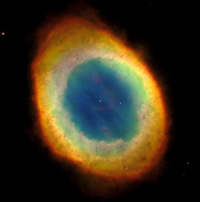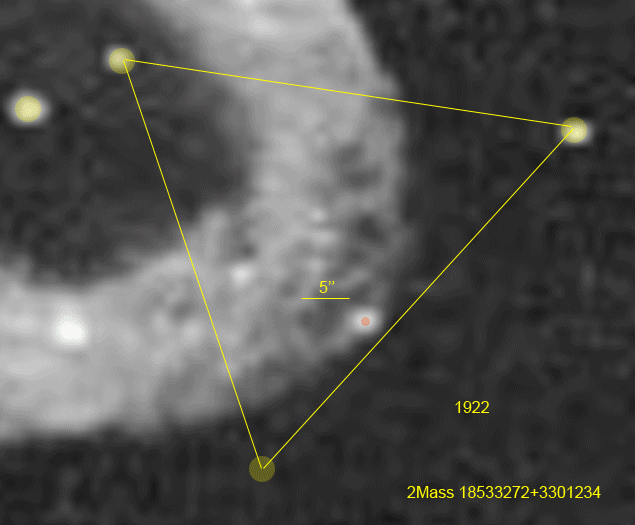A Smoke Ring and a Shooting Star
André van der Hoeven is a Dutch astrophotographer whose work has graced my blog many times in the past. He sent me a note recently: He’s been taking archived images of astronomical objects from telescopes like Hubble and Subaru and combining them. This way he can create an image that has both the fine detail due to Hubble’s excellent eyesight as well as the wide field and faint detail that comes from a bigger telescope like Subaru (an 8-meter giant in Hawaii).
The reason he sent me the note was because he had finished working on a picture of the Ring Nebula, one of the finest examples of a planetary nebula—a dying star shedding winds of gas—in the sky. His final product is nothing short of amazing:

Image credit: NASA/ESA/The Hubble Heritage Team (AURA/STScI/NASA); Subaru Telescope/NAOJ/Robert Gendler; André van der Hoeven
Gorgeous, isn’t it? I’ve observed the Ring Nebula literally hundreds of times; it’s big, bright, and very easy to find in the summer and autumn sky. Even through a small telescope you can make out that inner ring, which looks like a hazy smoke ring floating in the eyepiece. It looks almost like the solid disk of a planet, which is why these objects are called planetary nebulae.

Image credit: The Hubble Heritage Team (AURA/STScI/NASA)
But what’s truly amazing is all that outer material roiling around it, completely invisible in nearly every picture I’ve seen. That stuff is ethereally thin and incredibly faint, so it only shows up in deep images taken with big telescopes.
All of this gas was expelled by the star in the very center of the nebula, which was once very much like the Sun (though probably about twice our star’s mass). After billions of years of converting hydrogen to helium in its core and generating fierce amounts of energy, it started to run out of fuel. The star expanded into a red giant, blowing a wind of subatomic particles into space; that’s what makes up the shells of gas you see in the deep image.
Eventually, the star started to contract, heating up and blowing a faster wind that caught up with and slammed into the older material. That’s what forms the brighter inner ring. Interestingly, it’s not actually shaped like a ring: Studies have shown it’s actually barrel-shaped and oriented so that we’re looking down the barrel. It only appears to be shaped like a ring due to our viewing angle.
All of that is cool just by itself. But wait! There’s more!
While assembling the images together, van der Hoeven noticed something odd. A foreground star that happened to lie between us and the inner ring appeared to move between images. Curious, he found older images of the nebula, one from 1959 and another from as far back as 1922! Adding them together, you can clearly see this star moving across the frame:

How cool is that? The triangle connects three fixed stars, and the moving star—called 2MASS 18533272+3301234—is the red one in the middle of the triangle. Its motion is real: Like planets orbiting the Sun, stars orbit the center of the Milky Way galaxy. That motion can be hundreds of kilometers per second, but appears diminished to invisibility due to their vast distances. Over time, though, it adds up, and can be detected. Astronomers call this proper motion. This star seems to be moving about 0.1 arcseconds per year, a very small amount: The Moon is 1800 arcseconds across, so it would take this star nearly 20 millennia to move across a parcel of the sky the size of the Moon.
However, with telescopes, and the patience to wait 90 years, that motion is still detectable. Van der Hoeven also did some rough measurements and found the star is likely to be about 800 light years away, about a third of the distance to the Ring nebula itself.
He has more information about this on his website, including more images of the star’s motion.
From what I can tell, this star’s movement has never been noticed before, so congrats to van der Hoeven for his keen eye! Perhaps we should name the star after him. “Van der Hoeven’s star” has … wait for it, wait for it … a nice ring to it.

